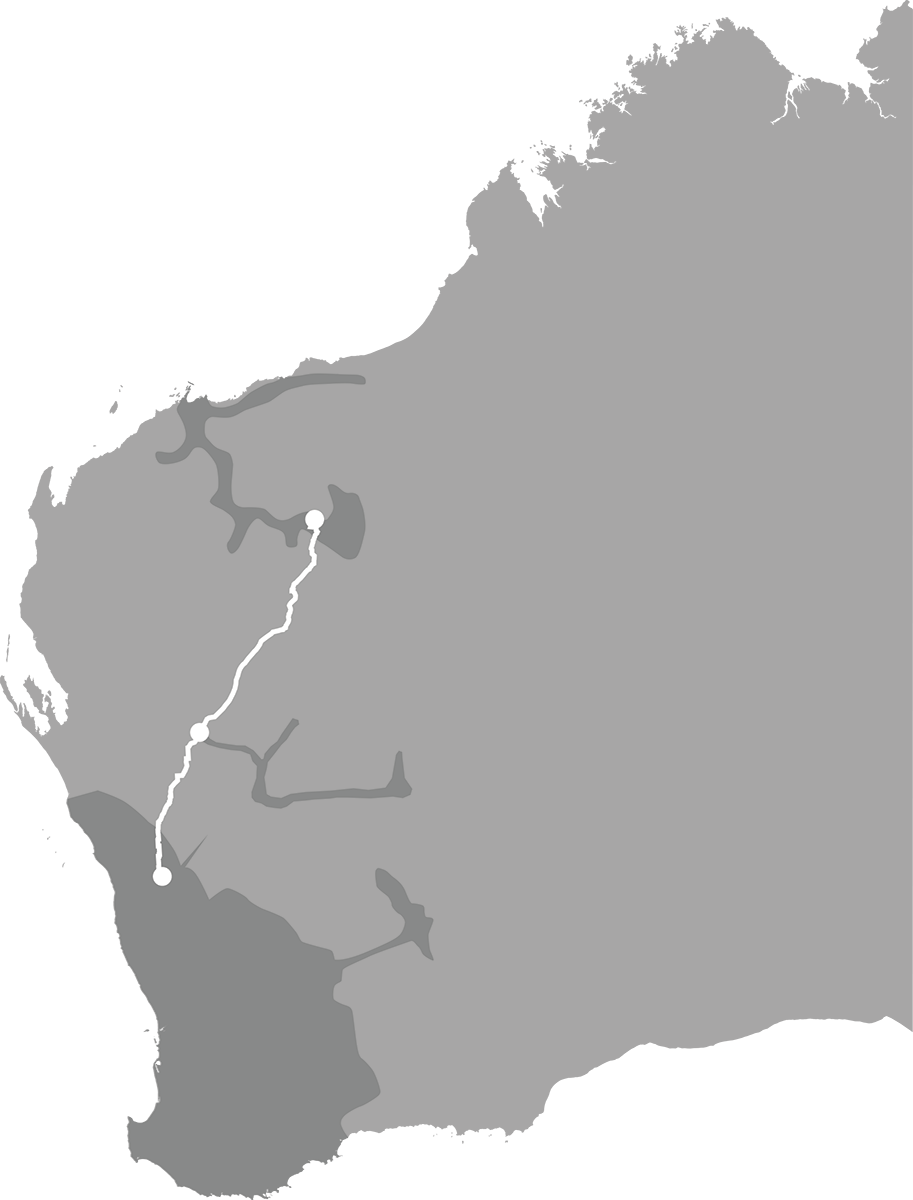Inside a 500 MW HVDC converter station (photo: ABB)
The Great Northern Power project is a high voltage direct current power system comprising a 500 megawatt Murchisonlink from Three Springs in the wheatbelt to a new hub in the Midwest, and Gascoynelink from the Midwest hub to a new hub in the central Pilbara.
In total 933 kilometres of low loss underground power cable will connect the South West and North West Interconnected Systems for the first time. With a new Mid West hub GNP will create a truly statewide interconnected power system. It will reduce power costs and barriers in each region and allow geographically-dispersed power plants to reach their full potential. Benefit to networksBecause HVDC is digital the level of control is far superior to traditional AC systems, allowing HVDC converter stations to provide near instantaneous stabilisation to voltage and frequency in the connected AC network. Improved stability can make an existing AC network more reliable, more resistant to unforeseen events and increase its power capacity, with both operational and economic benefits. Benefits to energy security
The power and gas supplies in Western Australia have been reliable but practically all generators in the NWIS rely upon a pipeline connection to the domestic gas supply, and in the Southwest rely upon Collie coal or the DBNGP gas pipeline. The Varanus Island explosion in 2008, that cut Western Australia's domestic gas supply by 30%, is an example of the unavoidable risks with single supply options. GNP will enhance energy security across the state, making available emergency power to the SWIS if there is a short-term failure of either the DBNGP or Collie coal supplies, and power to the NWIS if there is another failure in the domestic gas supply. |  |
The underground HVDC cable has zero visual impact, leaving the stunning Pilbara landscape unmarred
Benefits to the North West
GNP will give Pilbara power consumers access to power suppliers in the SWIS for the first time, with considerably more flexibility and lower costs compared to local gas and diesel powered plants.
Electricity in the Pilbara is primarily dependent on gas and diesel for fuel. The gas and diesel supply industries in Western Australia are dominated by a small number of powerful participants and are linked to volatile international markets. With little competition from alternative suppliers or alternative fuels, gas prices in particular remain high and unpredictable. Gas and diesel customers needing long-term contracts to support capital investment typically have great difficulty. GNP will introduce an affordable and more importantly, a predictable long-term power supply alternative, breaking the gas monopoly and providing a trigger for potential reductions to gas prices for all.
Pilbara generators will also be able to export electricity to the SWIS during times of high demand when prices are at a premium.
The power hub in the Pilbara will provide a shared use connection point for all electricity consumers and generators. It reduces the need for the existing isolated systems to carry extra reserve generators, and for new resource projects provides a convenient solution that can significantly reduce capital expenditure, defers spending, reduce risk and improve project viability.
Benefits to the South West
The new links will give customers in the SWIS access to 500MW of the approximately 1,400MW of gas-powered generation in the Pilbara. This additional peak capacity is likely to be sufficient to cover growth in peak demand for many years to come.
GNP will connect Pilbara-based generation to the SWIS in a place where the network is weak. The Three Springs converter station will support demand growth in the Mid West, deferring the need to augment the Western Power network.
Efficient power transfer over long distances
HVDC power transmission is an established technology traditionally employed in bulk power transfer, submarine applications or for connecting AC grids that are incompatible for frequency or stability. Advances in solid state electronics and control systems has fuelled a recent boom in HVDC installations, so that the largest installations now transfer in excess of 7,000 MW over distances of more than 2,000km.
Proven technology
HVDC works in the same way as the small wall-plug devices that charge our portable electronics. An arrangement of transistors and capacitors can convert an alternating current into a direct current and back again. Circuit designs for AC/DC conversion are standard, and are only limited by the power-carrying capability of the transistors that serve as switches.
A single transistor unit for HVDC duty can carry up to 2000 amps at 4500 volts. HVDC converter stations consist simply of parallel stacks of units to achieve the desired ratings. Converter stations are unmanned, don’t have moving parts and are low noise.
A complete converter station occupies around 2.5ha - less than the existing 330kV substation at Three Springs.
Parts of a HVDC converter station
HVDC converter electronic stacks (photo: ABB)
 | Low impact, high efficiency cable
Cables for HVDC are much smaller than for AC. They look like the co-axial cable used for TV aerials but larger at about 10cm diameter. Aluminium or copper conductor is insulated using cross-linked polyethylene and thin layers of electrical and physical shielding.
Unlike AC systems, DC cable systems do not emit strong magnetic fields, enabling multiple cables to be buried in one narrow trench. The right-of-way for HVDC systems is much smaller than AC cables of the same power rating and a fraction of that of an overhead power line. Buried cables have low environmental and visual impact, are resistant to weather events and maintain high reliability under flood and cyclonic conditions. HVDC is economically and technically superior over long distances because cables are compact and low-loss. |
Ambitious by Australian standards, the GNP cable will be less than half the length of some existing HVDC systems
The potential of the Mid West
The GNP project raises the option to deliver power to other locations. Three alignment options are presently under consideration with the route to be finalised after the consultation process; the western option passes the site of the Square Kilometre Array, Australia’s largest scientific project, and could supply the large amount of power needed for cooling and data processing; the central option passes nearby to Meekatharra, and could form a new power hub in this region; the eastern alignment would pass the major resources projects north of Leinster, but would be longer.
The Midwest is also one of the exceptional locations globally for renewable power generation. A new power hub in the Midwest would be ideal for connecting future large-scale renewable generation to the SWIS and the NWIS, providing both reliability and emissions reductions with less environmental and operational impact.
A radio receiver at the Murchison Radio Observatory scans the heavens

